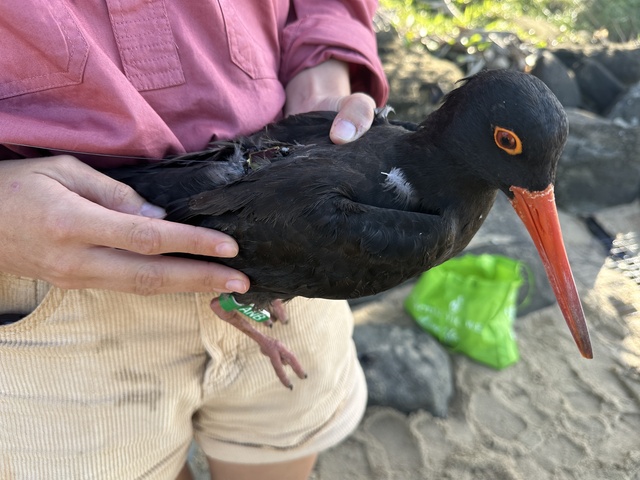Two tiny trackers are helping to uncover the secrets of the Sunshine Coast’s resident shorebirds.
In a collaboration with the Queensland Wader Study Group and with the assistance of the Queensland Bird Research and Banding Group, Sunshine Coast Council recently fitted two tiny satellite trackers to Sooty Oystercatchers.
These resident shorebirds live on our rocky shores and although they can often be seen on our shoreline, very little is known about them.
Sunshine Coast Council’s Coastal Conservation and Planning Team Leader Dr Simone Bosshard said the project was an initiative under the Shorebird Conservation Action Plan which guided Council’s actions to help protect the species.
“The research will follow the birds across the Sunshine Coast, allowing us to learn more about this species and how to better protect them from disturbance and threats they may face,” Dr Bosshard said.
“The trackers are now live and transmitting data.
“One adult bird was tagged at Point Cartwright.
“It has a green leg flag with the letters ANA, and seems to move between Pt Cartwright and Mudjimba Island, as well as along Alexandra Headland and Twin Waters.
“The second bird was a juvenile tagged at Caloundra Headland.
“It has a green leg flag with the letters ANB and currently stays locally at Caloundra and the northern tip of Bribie Island.”
The Queensland Wader Study Group is a non-government volunteer organisation dedicated to the protection of shorebirds and their habitat.
Their activities focus on the collection, analysis and dissemination of data concerning waders and membership is open to all who want to learn about or help in the conservation of these remarkable birds.
Jon Coleman, from the group said they were delighted to be working in partnership with Council on this project.
“This is the first-time transmitters have been used on this species and as more data is collected, Council will be able to understand the impacts of disturbance on behaviour and evaluate methods to protect these iconic birds while balancing the need for public access to our foreshore areas.“
The partnership with the Queensland Wader Study group is an example of how Council is working with our community to nurture and enhance our environment and quality of life.
Sightings can be submitted on CoastalDiscovery@sunshinecoast.qld.gov.au or on the Queensland Wader Study Group website.







